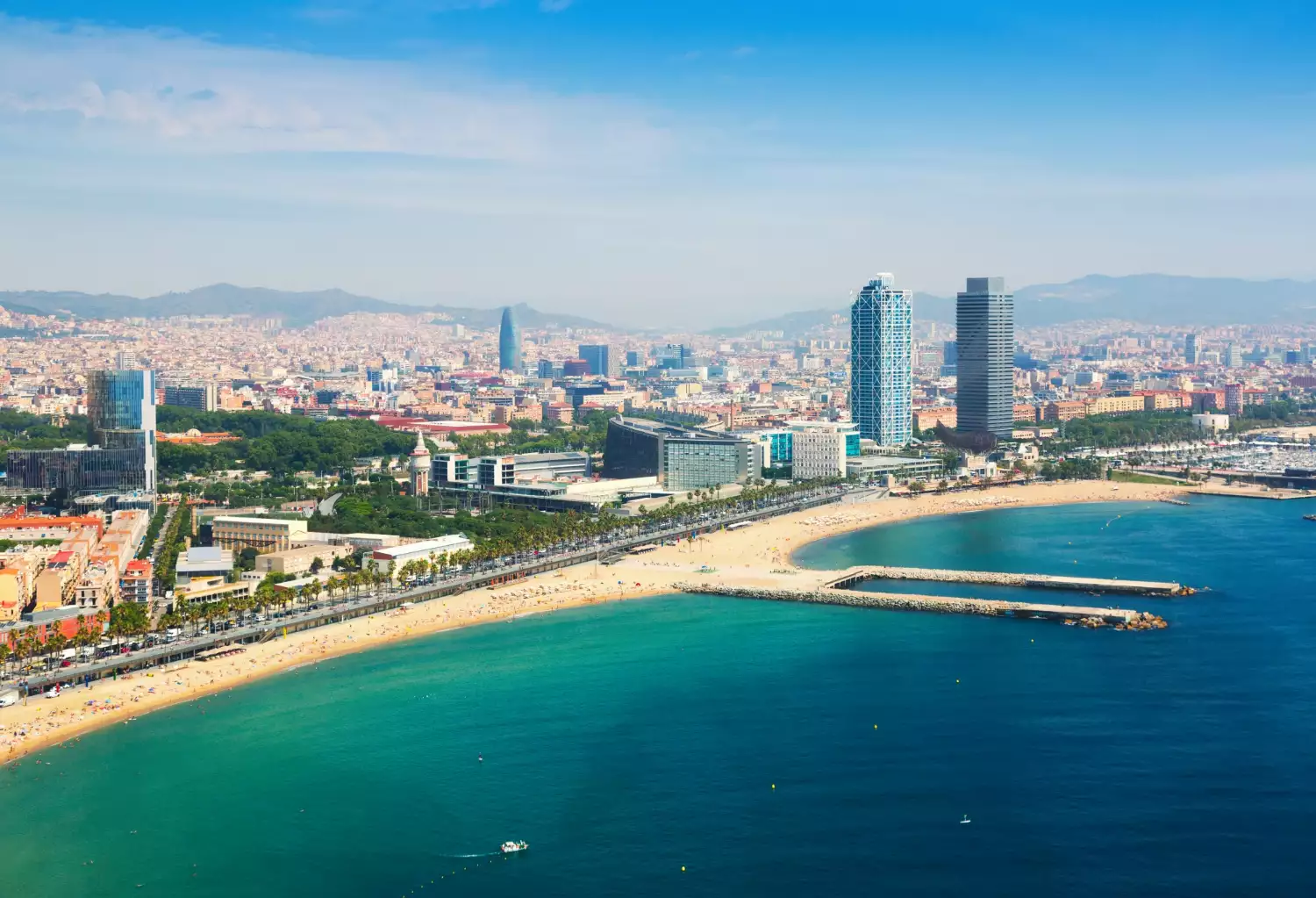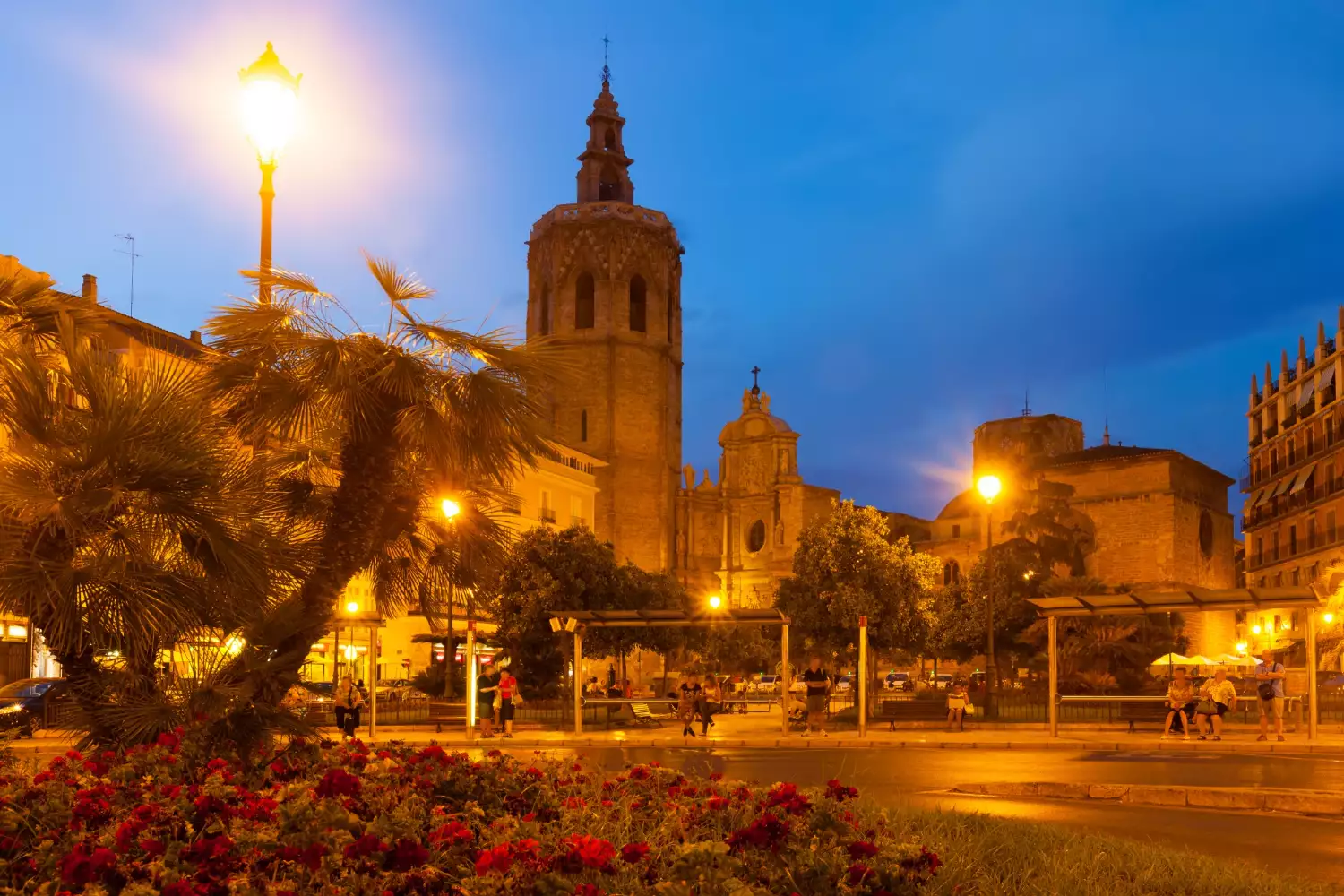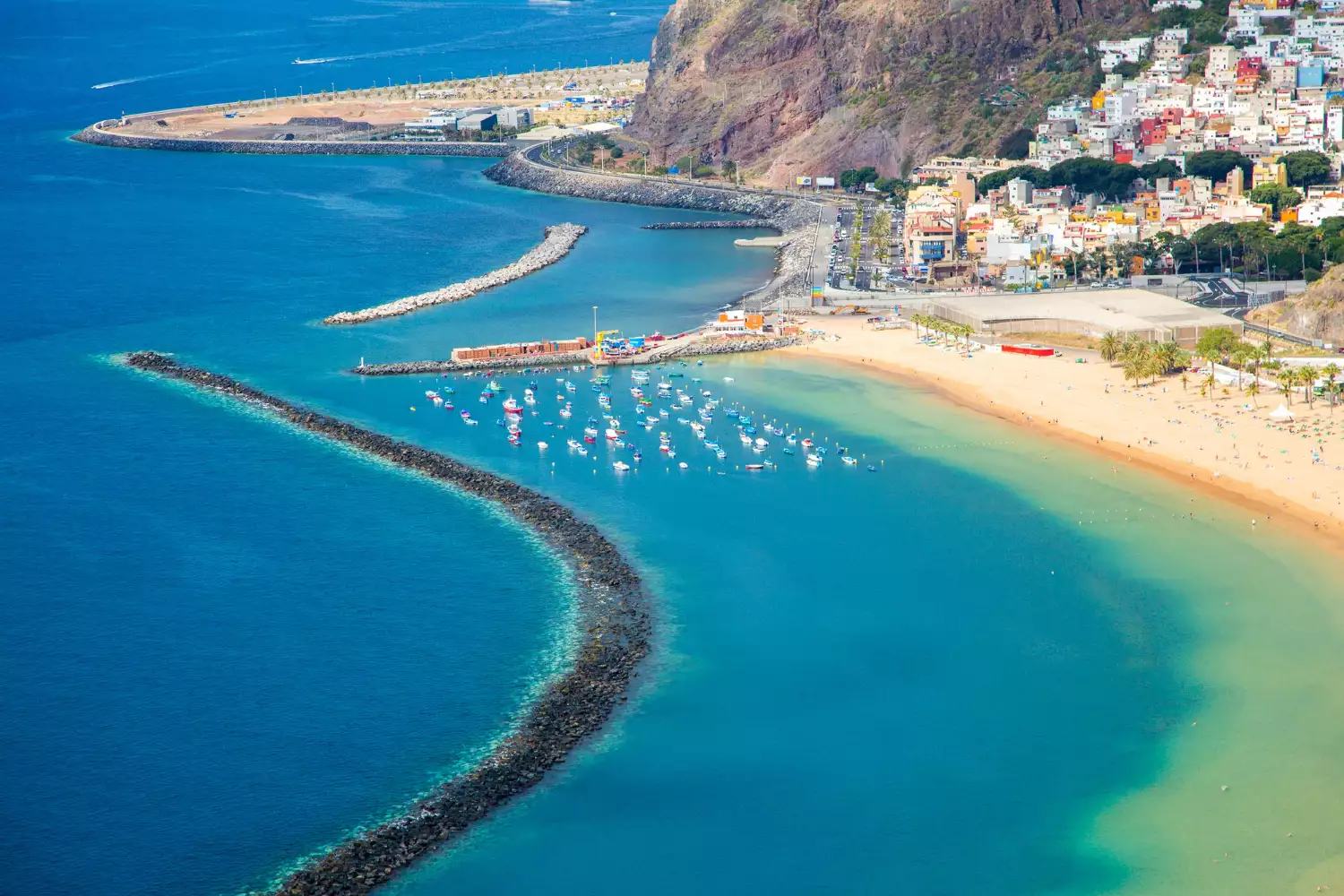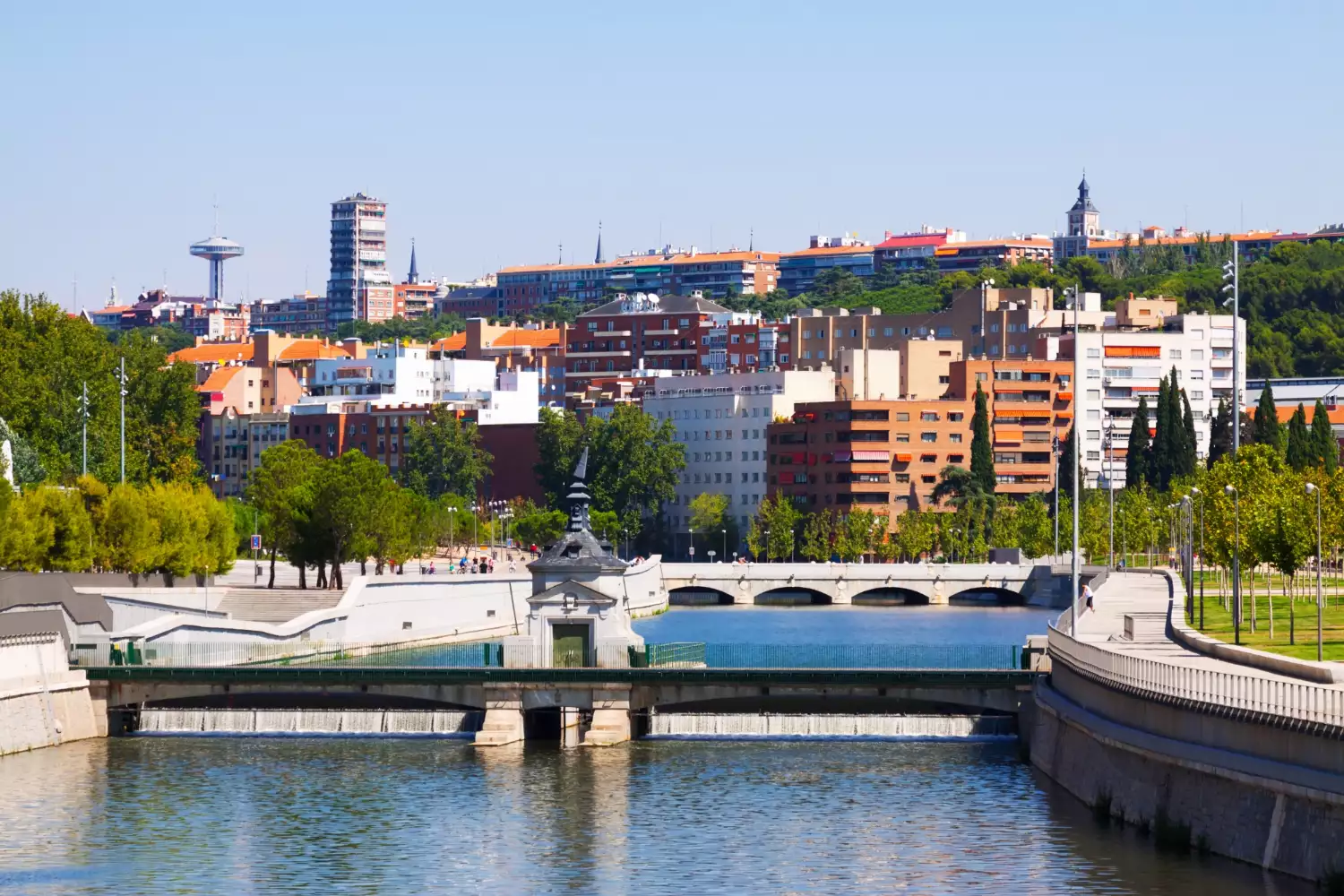Best places to live in Spain

Employment opportunities in Barcelona are comparable to other Spanish cities. Salaries are usually lower than in Madrid and range from €1,400 to €4,000 per month. Emigrants may face some restrictions, but knowledge of Spanish is considered a plus, especially for jobs in international companies and in the IT sector. Also, there are always vacancies in the hospitality and services sector, especially in the tourism sector.
The cost of living in Barcelona is more expensive than in other parts of Spain, but cheaper than in some other European cities. Rent is about the same as in Madrid, but slightly higher. A one-bedroom apartment can be rented for €750-€950 and a two-bedroom apartment for €1,300. The cost of utilities and public transportation is also higher compared to Madrid.
The average cost of a square meter of housing in Barcelona is €3.93 thousand, but in the surrounding smaller cities you can find more affordable options. For example, in Calafa a square meter costs €770, and in Artes - €827.
If you're looking for alternatives, smaller coastal towns near Barcelona may have more affordable housing costs. In Mataro, for example, prices are lower, with a square meter at €1,975, but in Cijes they are comparable to Barcelona at €3,845 per square meter.
Valencia
Valencia, is becoming an increasingly attractive destination for expats, and no wonder - after all, it is the third largest city in Spain. It has gained popularity in recent years due to its nice feature of being conveniently walkable. The city is divided by a long river that leads to the sea, either side of which are parks with walking and cycling paths, sculptures and playgrounds. The area is also home to the impressive and modern Ciudad de las Artes y las Ciencias, a museum and city of arts and sciences.

Valencia exudes a young and active atmosphere, thanks to the large number of students. The nightlife here is intense and there are many cultural and language exchange groups for newcomers. The difference between Valencia and Barcelona and Madrid is also that it offers a more relaxed lifestyle for those who don't crave the hustle and bustle of the city, but want to enjoy the occasional activity.
Valencia has an area of about 135 square kilometers, but the entire metropolitan area extends over almost 630 square kilometers. The city itself is home to about 834,000 people, while the region is home to almost 2 million people, a number that continues to grow.
The labor market in Valencia has recovered rapidly since the financial crisis of the late 2000s. This is due to the city's diverse economy, which depends not only on tourism but also on various industrial markets. The average salary in the city is around €3 thousand. The most sought-after fields are chemical engineering, textiles, automotive and building materials.
The cost of living in Valencia is significantly lower than in Madrid and Barcelona. Renting an apartment is available at reasonable prices. For example, a one-bedroom apartment will cost around €500-€700 per month, while a two-bedroom apartment will cost €750-€1,150. Utility bills are also lower, and public transportation costs €1.5 per trip and about €35 for a monthly pass.
The cost of housing in Valencia is also more affordable than in Madrid and Barcelona, with an average cost of €1,840 per square meter. Even more affordable options can be found in nearby provincial towns. For example, in Navarresa, just an hour's drive from Valencia, the average cost per square meter is €413, making it a very attractive area to buyreal estate.
Other popular cities in the region, such as Alicante and Torrevieja, also offer more affordable home prices, making the Valencian community an attractive destination for expats.
Málaga
Málaga is a port city that has long attracted foreigners. Despite its small size, Málaga has many interesting places and activities, but it is worth considering that in season there can be too many tourists, especially those arriving on cruise ships, which can make quiet walks less relaxing.
The immigrant community in Málaga is smaller than in major Spanish cities such as Barcelona, Madrid or Valencia, but it is welcoming and supportive.
Málaga is also famous for its pleasant climate, warm and sunny most of the year. The city is known for its beautiful architecture and natural areas. Although the nightlife in Málaga is not as active as in Madrid, there are plenty of restaurants and entertainment venues.

Málaga has an area of less than 400 square kilometers and the region has an area of 827 square kilometers. The city has just under 600,000 inhabitants and the region is home to about 1.1 million people.
The job market in Málaga is diverse and includes sectors such as technology, tourism, transportation, logistics and construction. The Technological Park of Andalusia (PTA) specializes in high technology, science and industry and provides many jobs. The average salary in the city is around €2,000 per month.
Knowledge of Spanish is a great advantage when looking for a job in Málaga, as in many other regions of Spain. Real estate can be a promising field for immigrants, especially if they speak several languages, as Málaga is a popular place to move to and requires specialists in this field.
The cost of living in Málaga is relatively affordable. Renting a one-bedroom apartment near the city center will cost about €850-€900 per month, and a studio can be found for €550. Monthly expenses, excluding rent, will be around €2,000 for a family and around €1,000 for a single person.
Additional costs such as restaurant meals and public transportation fares are also lower than in Spain's major cities. For example, a monthly public transportation pass in Malaga costs about €40, while in Madrid it costs €55, and a restaurant dinner for two people costs about €40.
The cost of housing in Málaga is also more affordable than in major cities. A square meter of real estate costs an average of € 2.19 thousand.
29 January 2025
9 October 2024
29 September 2025
29 January 2025
9 October 2024



Other popular locations in the region, such as Marbella and Fuengirola, offer higher real estate prices, but they are prestigious resorts that can justify the cost.
Tenerife
Tenerife, one of the Canary Islands, is an active and diverse destination for expats. The island offers a variety of entertainment including concerts, theater productions, exhibitions and many communities of interest. A variety of water and action sports are also available. The island has a stunning natural environment and you can venture into the mountains, visit volcanoes or national parks, and enjoy regular outdoor hikes.

One of the plus points of Tenerife is its close proximity to the other Canary Islands. You can easily reach the neighboring islands in just a few hours by ferry, and each offers unique topography, natural beauty and atmosphere.
Tenerife is a small island with an area of 2,034 square kilometers. Cities are small and traffic jams are rare, making traveling around the island comfortable and fast. Mountains, beaches and natural areas are within short distances of each other.
The main source of income in Tenerife is tourism, so most jobs are in service and entertainment. Salaries here are generally lower than in mainland Spain, averaging €1,000-€1,700 per month. Knowledge of English can be useful when looking for work, especially in the service, tourism and animation industries. Knowledge of Spanish will also be an asset and can open up additional job opportunities such as working in construction or commerce.
The cost of living in Tenerife is relatively low. Reasonable prices for food, public transportation and accommodation make the island attractive to expats. A daily lunch in a budget café will cost you around €10, while dinner for two in a good restaurant will cost around €40-€45. A monthly public transportation pass costs €40, and renting a one-bedroom apartment costs around €500-€600 per month.
The cost of real estate depends on the proximity to the beaches and the city center, but it is usually affordable. The average cost per square meter of real estate in Tenerife is about € 1,444. The price range is not as wide as in mainland Spain. This makes the island an attractive place to live and buy property.
Madrid
Madrid, the capital of Spain, is a balanced choice for expats looking for a variety of city life and a comfortable atmosphere for families. This large European city of around 3.3 million people has a rich cultural and social scene. Although Madrid is the second largest city in Europe, it is not as busy as London or Paris, creating a more relaxed and casual atmosphere.
For immigrant families, there are many neighborhoods available where you can live away from the city center and still have easy access to the center by public transportation. Neighborhoods such as Chambéry and Retiro offer a quiet and cozy atmosphere. Even central neighborhoods such as Salamanca can provide a peaceful environment to live and walk around. Madrid also has many museums, theaters, and entertainment venues for cultural relaxation.
Madrid is also known for its active city life and nightlife. The city offers many restaurants and clubs, and many of them open late at night. This is the place to enjoy a vibrant nightlife and meet your classmates.

Madrid has a large immigrant community that brings together people from all over the world. This makes it easier to find friends and acquaintances who speak different languages, and helps you feel comfortable in a new country.
Regarding the size of Madrid, it is worth noting that the Spanish capital has an area of about 606 square kilometers, and includes more than 30 municipalities that make up the Madrid region. This urban region has a population of around 6.6 million people, making it one of the most populated regions in Spain.
In terms of job opportunities, Madrid is the economic center of Spain and a variety of jobs can be found here. Average salaries in the city range from €1,600 to €3,500 per month, but it is worth noting that there is a highly competitive labor market for foreign workers.
Knowing Spanish provides more job opportunities, but even if you only speak English, it is possible to find work in fields such as marketing, accounting, logistics, trade, tourism, information technology and services.
The cost of living in Madrid is higher than in other Spanish cities, at around €3,500-€4,000 per month for a family of four. This includes rent in a close-to-the-center neighborhood, which can be €800-€1,500 per month depending on the size and location of the apartment. But there are more affordable housing options in the suburbs.
Other expenses such as public transportation and eating out are also part of the budget. A single subway ticket costs less than €2 and a monthly pass costs around €55. The cost of lunch for two ranges from €25 to €70 depending on the restaurant, but even cheap restaurants offer inexpensive dining options.
The cost of housing in Madrid differs depending on the area and distance from the center. The average price per square meter is around €3,744. However, it is possible to find more affordable options, especially in the surrounding municipalities. For example, in Colmenar de Oreja and Carabaña, you can find more affordable housing while maintaining access to the center of Madrid.
In general, Madrid provides a variety of opportunities for work, cultural activities and entertainment, but the cost of living can be higher compared to some other Spanish cities.
Tags
Comment
Popular Posts
9 October 2024
9940
29 September 2025
390
29 January 2025
1528
9 October 2024
1485
Popular Offers

Subscribe to the newsletter from Hatamatata.com!
Subscribe to the newsletter from Hatamatata.com!
I agree to the processing of personal data and confidentiality rules of Hatamatata











